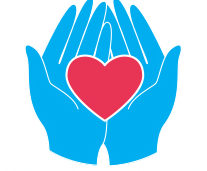My Mother-in-Law had undiagnosed osteoporosis until she simultaneously fractured both collar bones. She did nothing to cause the fractures, no fall or trip, they just fractured.
This resulted in 16 weeks in hospital unable to do anything for herself. She was also registered blind. She was sadly in a hospital ward for the majority of the time where the care was lacking to say the least. She was left with her food tray in-front of her, unable to feed herself. I used to go in daily to feed and care for her. Little has changed.
Osteoporosis weakens bones and makes them more likely to break. Anyone can develop osteoporosis, but it is common in older women. As many as half of all women and a quarter of men older than 50 will break a bone due to osteoporosis.
Risk factors include
- Getting older
- Being small and thin
- Having a family history of osteoporosis
- Taking certain medicines
- Being a white or Asian woman
- Having osteopenia (low bone density)
Osteoporosis is a silent disease like my Mother in Law you might not know you have it until you break a bone. A bone mineral density test is the best way to check your bone health. To keep bones strong, eat a diet rich in calcium and vitamin D, exercise and do not smoke.
The recommended daily intake of calcium for an adult between the ages of 19 and 50 is 1,000mg per day and an adequate intake of vitamin D is needed to absorb the calcium.
Calcium rich foods include
- Milk
- Kale a cup of raw kale contains 90 mg of calcium. That means a 3.5-cup kale salad provides even more of the bone-builder than a one-cup glass of milk.
- Vitamin C, one navel orange also provides 60 mg of calcium.
- Three ounces of sardines, canned in oil with the bones,contains 33 percent of your daily requirements.
- Porridge is already the breakfast star and also contains a significant amount of calcium. A 35 g packet of Quaker instant oatmeal (the apple and cinnamon flavour)contains 105 mg
- An ounce of sesame seeds contain 280mg
- Mozzarella has 200mg as does hard cheeses like cheddar ,parmesan has 70mg per tablespoon.
- One cup of soya beans, boiled without salt,contains 261mg of calcium.
- A one-ounce serving of almond provides 80mg. They can also help to reduce high blood sugar, assist weight loss and reduce cholesterol.
- Salmon is a nutritious fish, tree ounces of canned salmon with the bones contains 181 mg of calcium but you have to eat the bones.
- Half a cup of white beans have almost to 100 mg of calcium.
- An eight-ounce serving of plain, low-fat yoghurt has 415 mg
- Figs, two dried figs offer 55 mg of calcium.
- One cup of boiled turnip greens is has almost 200mg.
If you don’t think you can include this into your daily/weekly food plan you can always take a supplement.

